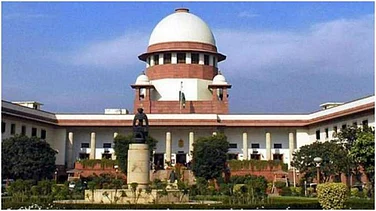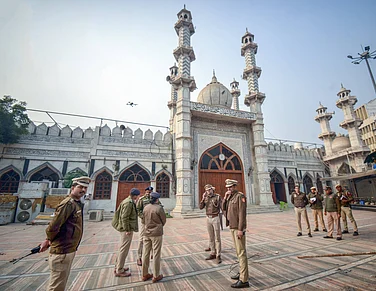If India is ‘South’ from the perspective of the developed countries of the ‘North’, then Bihar was the ‘South’ within the South. The corporate sector was non-existent and civil society either retarded or totally absent, leaving the State in a predominant position. In Bihar, in other words, the State was the only tangible entity among the three agents of development, but it was by no means a robust State. While in much of the southern and western parts of India, the State’s role has been amply supplemented by the other two agents—corporate sector and civil society—Bihar was stuck with a ‘weak’ State and little besides.
Since 2005, though, Bihar has been seeing dramatic change, with the growth rate hovering around 10 per cent. And yet it is nowhere near the pinnacle and is still no match for the southern and western states such as Tamil Nadu, Gujarat, Maharashtra and Karnataka. In spite of huge increases in plan as well as non-plan investment, Bihar remains, by all economic indicators, at the lowest rung of the ladder. What explains this paradox? Do historical factors still limit Bihar’s development trajectory?
While the structure of the State that India inherited from the British was being built at the national level, the commensurate efforts at the regional level were not uniform. The specifics of regional history—especially factors such as the presence or absence of the East India Company in the initial period, the system of land tenure, the pattern of public investment and the nature of social movements—played a big role in the evolution of each state. As a part of Bengal Presidency, the first seat of the East India Company, Bihar was subjected to maximum exploitation. Not just the industrial revolution in Britain, but also the Company’s war expeditions in the subcontinent, were facilitated by enforced de-industrialisation of the Gangetic belt, which also involved the extermination of the region’s artisans and entrepreneurs. The deficits of the Bombay and Madras Presidencies were also financed using the surplus from Bengal.
Under Lord Cornwallis, the then governor-general, the Company formalised the feudal zamindari system in Bengal Presidency with the ‘permanent settlement’ of 1793. The appointment of ‘intermediaries’ for revenue collection from peasants put in place an exploitative and backward-looking land-tenure system. In contrast, provinces in the southern, western and north-western parts of the subcontinent, where the ryotwari and mahalbari systems—entailing a direct relation between the State and the tenant, with no zamindar in between—were formalised by the Company, had a better track record of governance and public finance management.
The absence of intermediaries under ryotwari and mahalbari resulted in higher tax collection, leading to more public investment. In the permanent settlement areas, on the other hand, the quantum of tax was fixed between the intermediaries and the Company, but not between the intermediaries and the tenant, giving the intermediaries a free run and resulting in exploitation and atrocities. While an incentive structure linked to productivity was embedded in the ryotwari and mahalbari systems, it was altogether absent in the permanent settlement area of Bengal Presidency. No wonder the zamindars in Bihar not only remained hostile to development, but used all their trappings of power for exploitation.
Wherever public investment was done during British Raj (mainly in canals and roads), the region saw development not only then, but even after Independence, including the green revolution. Moreover, if some regions witnessed social movements of a multi-caste nature, it led to the building of a regional identity and strengthened the agenda of economic development. But, in the cultural construction of mainstream Bihar, people only had a caste and a national identity. No sub-national identity could develop here. That is why a sense of ownership was always absent in Bihar, which seriously compromised its development agenda.
Bihar was thus at a disadvantage on all four counts that primarily shape the character of a region. In the absence of a robust State, the INStitutional capacity for governance was limited. Yet, a myth was trotted out, citing an oft-quoted report by Paul Appleby, that Bihar was the best-governed state in India at the time of Independence. Surprisingly, Bihar does not appear in either of Appleby’s two reports; the quotation about good governance was indeed a figment of the imagination.
In fact, Anand Yang, a celebrated expert on Bihar, writes about “Limited Raj”, arguing that the authority of the State in Bihar was limited even under British rule. The ‘memorandum for the Indian Statutory Commission on the working of the reform in Bihar and Orissa’, presented by the Bihar government, noted: “In 1927-28, the expenditure levels in the Bombay province was nearly six times that of Bihar and Orissa for general administration; more than four times for education; and nearly three times for health.” The historical baggage of financial malnutrition, resulting in non-governance under the Raj, could not be changed so soon after Independence.
Not surprisingly, Bihar saw “democratically endorsed non-governance” for almost six decades. The traditional elite, who led the independence movement and ruled the state in the post-independence period for more than four decades, could not give Bihar a distinctive developmental or governance identity. Two factors critically reinforced the state’s disadvantage post-Independence—absence of land reform and the freight-equalisation policy. The former eroded the possibilities of equity, incentive structure and entrepreneurial base, while the latter forestalled the possibility of investment, making it tough for Bihar to develop as a capitalist state.
These two monumental failures could have been ignored had the quality of management in the realm of public finance been commendable. Not only was the management bad, Bihar had the dubious distinction of corruption being predominantly input-based, while turnover-based corruption is the norm in the better-off states—a post-production profit-sharing arrangement, where equity may be absent but accumulation is guaranteed, adding value to the economy. In the Bihar model of corruption, which is a sign of underdevelopment, inputs are devoured without any tangible output.
In 1990, when the Congress was uprooted electorally, it was expected that ‘bottom-up’ governance would trigger a paradigm shift in Bihar. Again, when a government talking social justice took over the reigns of the state, it was expected to create a new benchmark in governance. Indeed, no state has witnessed the process of electoral democratisation that Bihar has. And yet development proved to be a non- starter. It is only since 2005, under the NDA as well as the Mahagathbandhan (Grand Alliance), that the Bihar turnaround story is being scripted.
(Shaibal Gupta is member-secretary of Patna-based think-tank ADRI.)






















